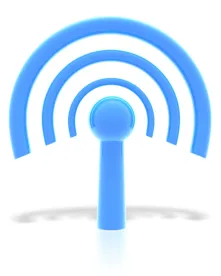Takeaway: Arguments related to the patentability of a challenged claim that are not commensurate in scope with the claimed invention are not persuasive.
In its Final Written Decision, the Board found that Petitioner established by a preponderance of the evidence that claims 1-6 are unpatentable and denied Patent Owner’s Motion to Amend. The ’568 patent generally relates to “radio communications systems, such as cellular or satellite systems, that use digital traffic channels in a multiple access scheme, such as time division multiple access (‘TDMA’) or code division multiple access (‘CDMA’). “
First, Patent Owner argued that Petitioner was barred under the “35 U.S.C. § 315(b) bar as a privy to the D-Link Defendants” because Petitioner had an indemnity relationship with defendants in the related litigation and apparently relied upon the same prior art as the defendants. The Board was not persuaded and found Patent Owner’s arguments to be identical to those asserted in its Motion for Additional Discovery concerning real parties-in-interest.
Turning to claim construction, the Board first stated that claims in an unexpired patent are given their broadest reasonable construction in light of the specification. The construction of only one claim term, “service type identifier,” was analyzed in the Board’s decision. Patent Owner challenged the Board’s construction of the term set forth in the Decision on Institution, but the Board found Patent Owner’s arguments unpersuasive. Therefore, the Board adopted its prior construction of the term, defining it to mean “an identifier that identifies the type of information conveyed in the payload, including but not limited to video, voice, data, and multimedia.”
Turning to the asserted grounds of unpatentability, the Board held that claims 1-6 are anticipated by Morley, finding Petitioner’s arguments and expert testimony persuasive. The Board found Patent Owner’s arguments related to the term “service type identifier” as not commensurate in scope with the claims. In this regard, Patent Owner was attempting to import limitations into the claim term. The Board also found certain of Patent Owner’s arguments to depend upon its claim construction position, which was not adopted.
The Board was also persuaded that claims 1-6 were unpatentable as obvious over Adams. The Board found Patent Owner’s arguments unpersuasive. First, Patent Owner’s arguments with respect to the term “service type identifier,” the Board found the arguments as not commensurate in scope with the claims and otherwise unpersuasive. With respect to the transmitter limitation, which Petitioner conceded was not explicitly disclosed in Adams, the Board found persuasive Petitioner’s arguments that it would have been obvious to provide the feature.
Turning to Patent Owner’s Motion to Amend, the Board denied Patent Owner’s motion to substitute claims 8-13 for challenged claims 1-6. The Board found that Patent Owner had shown adequate written description support for the proposed claims as a whole, disagreeing with Petitioner’s interpretation of the cited passages in support of Patent Owner’s Motion. However, the Board held that Patent Owner did not demonstrate by a preponderance of the evidence that the proposed claims are patentable over the Morley reference. In this regard, the Board agreed with Petitioner’s interpretation of both the Morley reference and the scope of the proposed claims in finding that Morley disclosed the features of proposed claims 8-13.
Broadcom Corp. v. Wi-Fi One, LLC, IPR2013-00602
Paper 60: Final Written Decision
Dated: March 6, 2015
Patent: 6,466,568 B1
Before: Karl D. Easthom, Kalyan K. Deshpande, and Matthew R. Clements
Written by: Clements
Related Proceedings: Ericsson Inc. v. D-LINK Corp., Civil Action No. 6:10-cv-473 (E.D. Tex.); Ericsson Inc. v. D-LINK Corp., Case Nos. 2013-1625, -1631, -1632, and -1633 (Fed. Cir.); IPR2013-00601 (U.S. Patent No. 6,772,215); and IPR2013-00636 (U.S. Patent No. 6,424,625)



 />i
/>i

